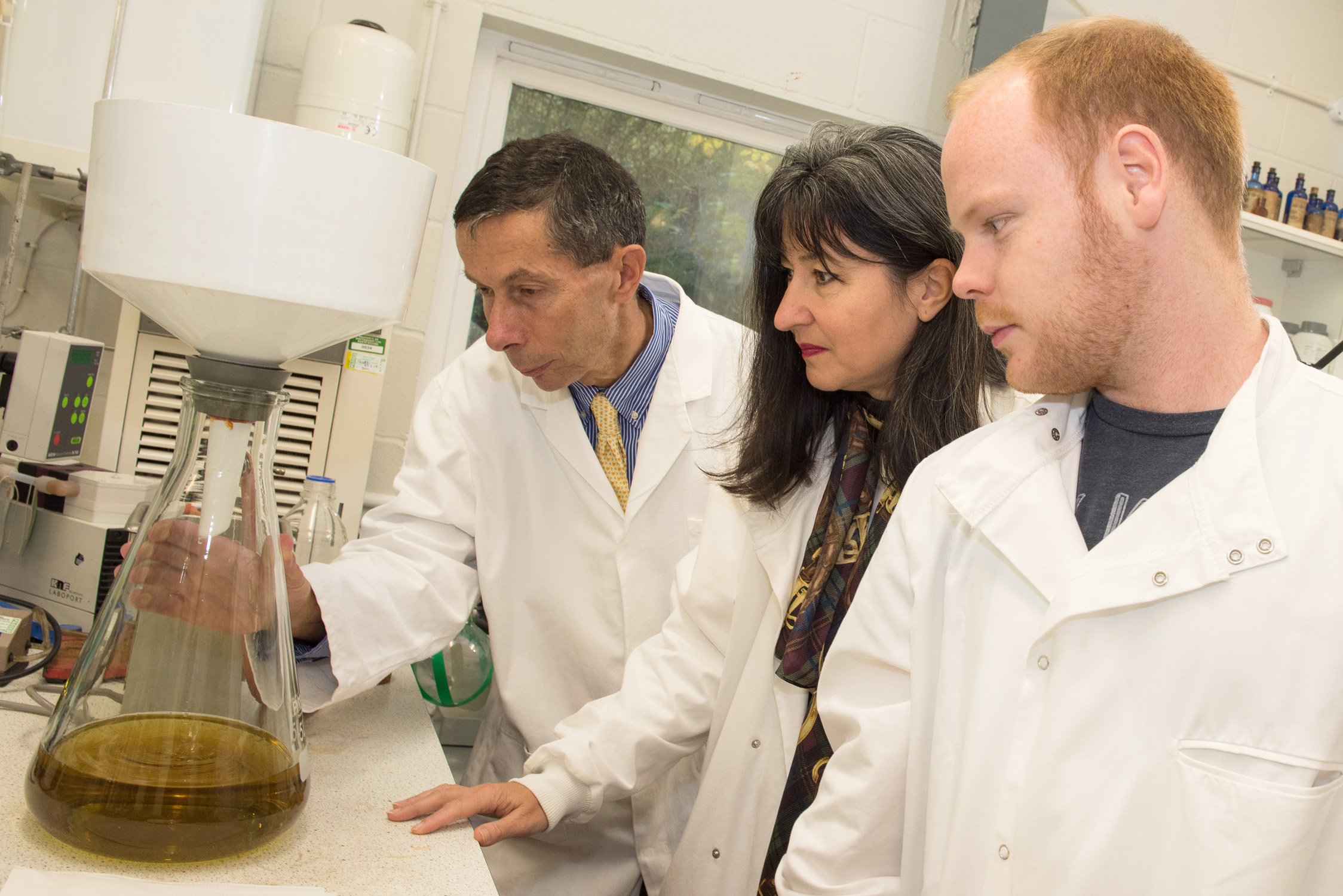IBERS Researchers Help Uncover How a Bacterial Molecule Reprograms Plant Defences

Robert Nash and team at work in the laboratory
27 May 2025
Breakthrough published in Science could pave the way for novel crop protection strategies
Scientists at IBERS (the Institute of Biological, Environmental and Rural Sciences) at Aberystwyth University have contributed to a major international research breakthrough, uncovering how a plant-infecting bacterium uses a previously unknown molecule to subvert plant defences. The findings were published in Science, one of the world’s most prestigious scientific journals.
The study revealed that Pseudomonas syringae, a bacterium responsible for damaging a wide range of crops, produces a molecule called glycosyrin—an unusual sugar-like compound that interferes with key plant enzymes. These enzymes normally help plants control the structure and signalling within their cell walls, which are crucial for detecting and responding to infection. By disrupting these defences, the pathogen gains a foothold and spreads more easily through the plant.
IBERS researchers were instrumental in identifying how this molecule is made and how it works at the molecular level. Using cutting-edge biochemical tools and structural modelling, they helped trace the biosynthetic pathway of glycosyrin and uncover how it binds to and inhibits specific plant enzymes.
“This is a striking example of the molecular arms race between plants and the pathogens that infect them,” said Robert Nash, researcher at IBERS and co-author of the study. “Understanding how these molecules work opens up exciting possibilities for developing new ways to protect crops—either by blocking the action of glycosyrin and similar molecules or by breeding plants that are resistant to them.”
This research aligns closely with IBERS’ mission to improve agricultural resilience and food security through fundamental and applied science. It contributes to broader efforts funded by BBSRC and UKRI to develop more sustainable farming systems, reduce crop losses, and meet the growing demand for climate-smart agriculture.
By helping to uncover a new mechanism by which bacteria can manipulate plant biology, IBERS scientists are not only deepening our understanding of plant–microbe interactions, but also supporting innovation in disease-resistant crops—a key priority for UK and global agriculture.
The full paper, “Bacterial pathogen deploys the iminosugar glycosyrin to manipulate plant glycobiology”, is available in the 2025 edition of Science (Vol. 388, p. 297). The work involved collaboration between the University of Oxford, Diamond Light Source, and several research institutions, including IBERS at Aberystwyth University.



